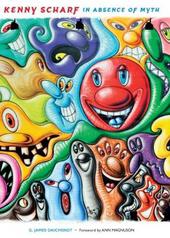
|
Kenny Scharf: In Absence of Myth
Paperback / softback
Main Details
Description
Kenny Scharf's life story is the equivalent of riding a roller coaster. Raised in Southern California, this king of cool eventually packed his bags for New York City, where he became an integral part of an underground East Village art scene that changed the world. His graffiti-inspired paintings, wild performances, and sculptures earned him an international reputation for making art accessible. This meteoric rise involved parties, drugs, sex, and of course rock 'n' roll. Yet there were many unexpected twists and turns, from marriage and family to tragedy and depression. With the advent of AIDS and shifting trends in the art world, Kenny fell from grace and was even mistakenly thought to have passed away along with fellow artists Keith Haring and Jean-Michel Basquiat. Recovering in Florida, raising a family, and eventually returning to California and New York, Kenny Scharf's sporadic, adventurous, and chaotic lifestyle is unimaginable, humbling, yet ultimately redeeming. Patched together like one of his silk screens, this official biography provides a front seat to the glamour, gossip, and the story of an artist who "made it" once and his struggle to come back.
Author Biography
G. James Daichendt is Dean of the Arts and Humanities and Professor of Art History at Point Loma Nazarene University in southern California. A graduate of Columbia, Harvard and Boston universities, Dr. Daichendt is the Chief Editor of the academic journal: Visual Inquiry: Learning and Teaching Art and is an art critic for KCET, the nation's largest independent public television station. Recent books include Shepard Fairey Inc., Artist/Professional/Vandal (2013), Stay Up! Los Angeles Street Art (2012), Artist Scholar: Reflections on Writing and Research (2011), and Artist-Teacher: A Philosophy for Creating and Teaching (2010).
Reviews". . . The tone for Kenny Scharf has Daichendt leave out stoic critique seen in his previous bios. He leaves that to Scharf, who is fully willing to self-critique the paths he wandered on. That makes this more than a biography of an artist. It offers some backstory of an art movement old enough to have a real history . . ." - Ed Fuentes, arts writer, Paint This Desert
|